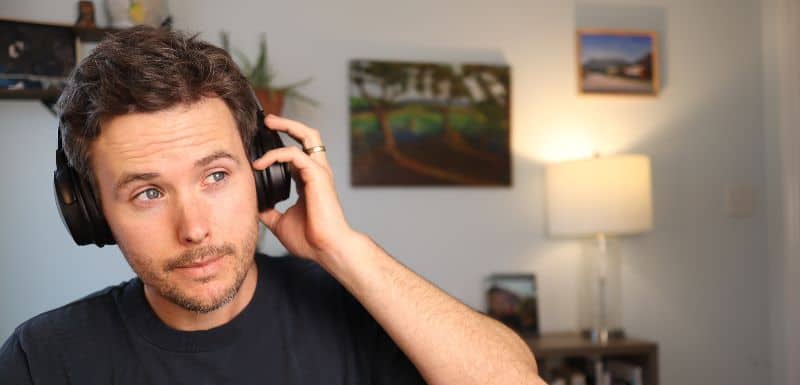Just behind Mandarin Chinese, Spanish has the second-most native speakers of any language.

It’s also spoken in a territory that ranges thousands of miles, on multiple continents, and across an ocean.
So it’s no wonder that there’s such a variety in the way people speak.
If you embrace it, it makes the language endlessly interesting.
But… It can also make it hard to understand.
Not long ago, I got an email from a reader named Mike, who said:
“When it comes to listening to Latin-American speakers I feel like I’m hearing a totally different language than Spanish (like Portuguese). But when I listen to a speaker from Spain I understand most of what they are saying, & if not all of the words used, I normally get the concept of the topic at hand.”
Can you relate to this? Or the reverse?
Today’s Saturday Spanish is dedicated to understanding (and working on) this challenge.
S or no S?
The other day, some students and I were talking about a video from El Chalten in Argentina.
Specifically, we were discussing the presenter’s rioplatense accent and how challenging it was for them to understand.
We talked about how the LL and Y change from place to place…
And how the S gets dropped or aspirated (“h” sound) in many regions.
Of course, those aren’t the only regional variations. The many changes to the sounds of Spanish present a challenge every Spanish learner needs to tackle.
Here’s the challenge, as I see it:
Getting used to a new accent in Spanish is a function of three things:
- Awareness of the sounds, so you know what you’re listening for (this is what we cover in-depth inside Confident Spanish Pronunciation)
- Active listening
- Exposure over time
Once you know what to expect from a new accent, (e.g., the S disappearing), it’s a matter of time, exposure, and focused listening. Depending on your level, getting used to a new accent could take an hour, or it could take 20.
Unfortunately, most learners spend far more time learning words and grammar than they do training their ears and listening actively (not just passively, while driving or jogging).
Words and grammar are useful.
But they are just the component parts. Spending all your time there is like building a boat without ever learning how to navigate the ocean.
I think all learners should spend a good chunk of their time listening to speakers from a variety of places.
Fortunately, that’s easy these days. All you need is interesting audio and a transcript.
A great resource for Spanish comprehension:
One resource I love to help with this is called Jiveworld.
They turn episodes of the hit podcast Radio Ambulante into interactive learning material.
Radio Ambulante features stories from all over the Spanish-speaking world – meaning you’re exposed to nearly any accent you can think of.
What I appreciate about Jiveworld is that it encourages repetition — one of the best (and most underrated) ways to improve comprehension.
Each longer episode is broken up into more manageable chapters:

And you’re presented with different ways to approach the same audio segment.
You’ll listen to it with all the text showing…

With parts of the text missing…

With the text blacked out…

And you even get periodic insights into the accents you’re hearing…

And bits of grammar that you encounter along the way…

One of the coolest feelings as a Spanish learner is to go from shaky understanding to really “getting it”.
You can’t do this all at once, with all of the Spanish language. It’s a very gradual process.
But you can do it one piece of content at a time.
If you go through this kind of in-depth, step-by-step process with an episode of Radio Ambulante, you’ll be able to sit down and follow (plus or minus a bit) an entire episode of full-speed, idiomatic Spanish.
Practice how you play
There’s a sports quote that goes something like this: “How you practice is how you play”.
If your practice looks nothing like the game, you can’t expect the game to go well.
If you tend to stay in the world of words and grammar, you’re not practicing for the “game” of real-world Spanish. The game of speaking a new language is varied, unpredictable, and fast.
The only way to prepare for it is to build authentic, idiomatic Spanish into your routine.
Even if you’re a beginner, start building a habit of this in small ways (just make it your goal to see if you do understand any phrases, rather than getting frustrated that you don’t understand the whole thing).
Otherwise, you can end up with a huge mental dictionary and laundry list of conjugations…but no way to use them.
All dressed up with nowhere to go.
So here’s your mission for this week: practice how you want to play, and build some challenging, accent-rich, repetitive listening into your routine.
Connor
Looking for something more? The Confident Spanish Pronunciation Course will help you tune your ear to the many sounds of Spanish so you can speak – and understand — with more confidence and ease.
Click here to read what current students are saying.



I have been using Jiveworld (used to be called Lupa) for three years. I agree that it’s the best resource for listening to stories from America Latina. It’s a great way to build fluency and vocabulary. I try to spend 5 – 10 minutes on Jiveworld each day. If you are on a tight budget, you can also do what I did in the beginning. Listen to the podcast (available only in Spanish) and follow along with the transcripts in Spanish and English. It’s not as convenient, but effective, but I would rather eat out less than to say I couldn’t afford Jiveworld. Thanks for recommending Jiveworld. It’s a great tool if the discipline to use it is there.
https://radioambulante.org/
https://radioambulante.org/en
https://www.jiveworld.com/en/pricing/